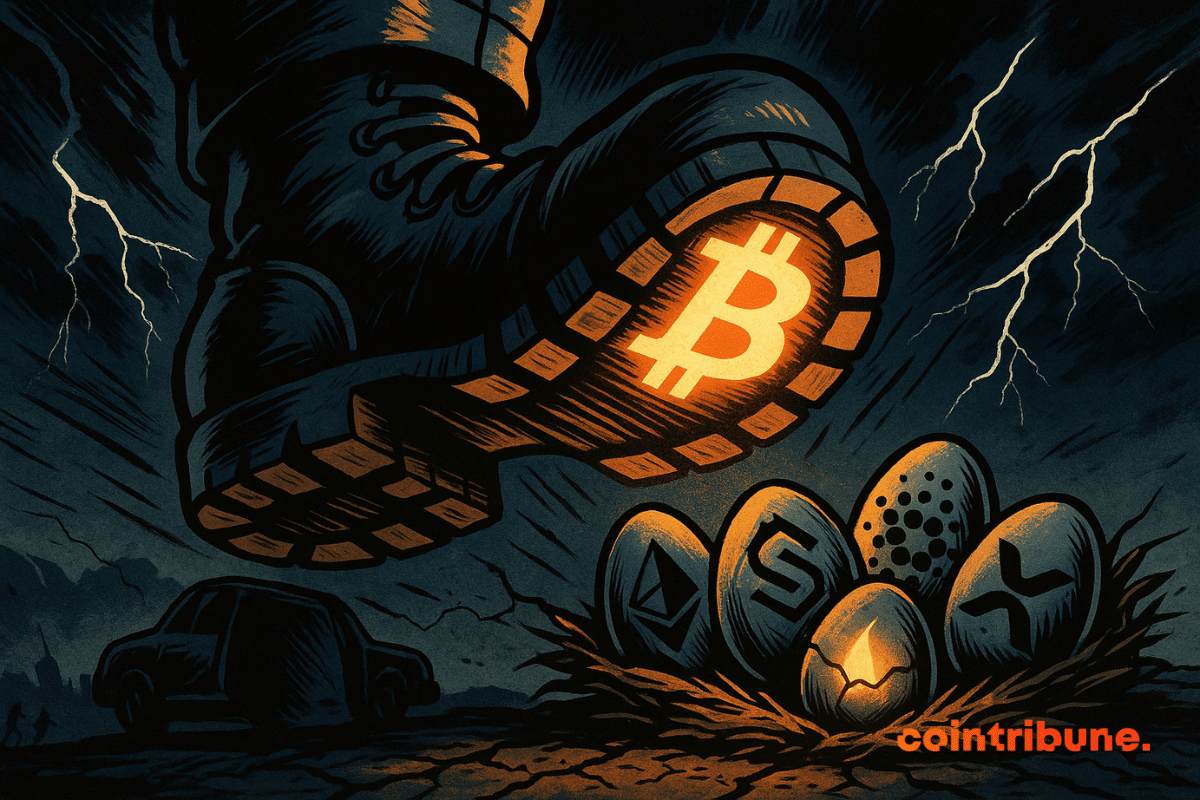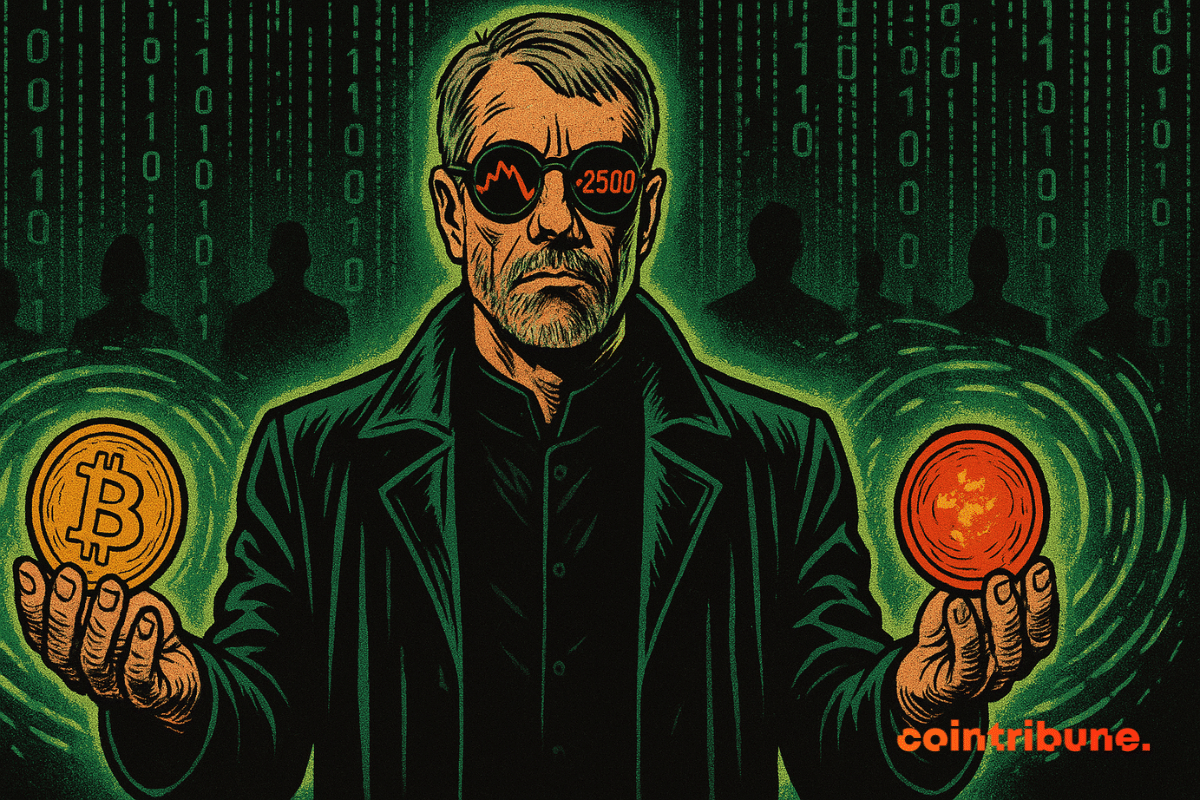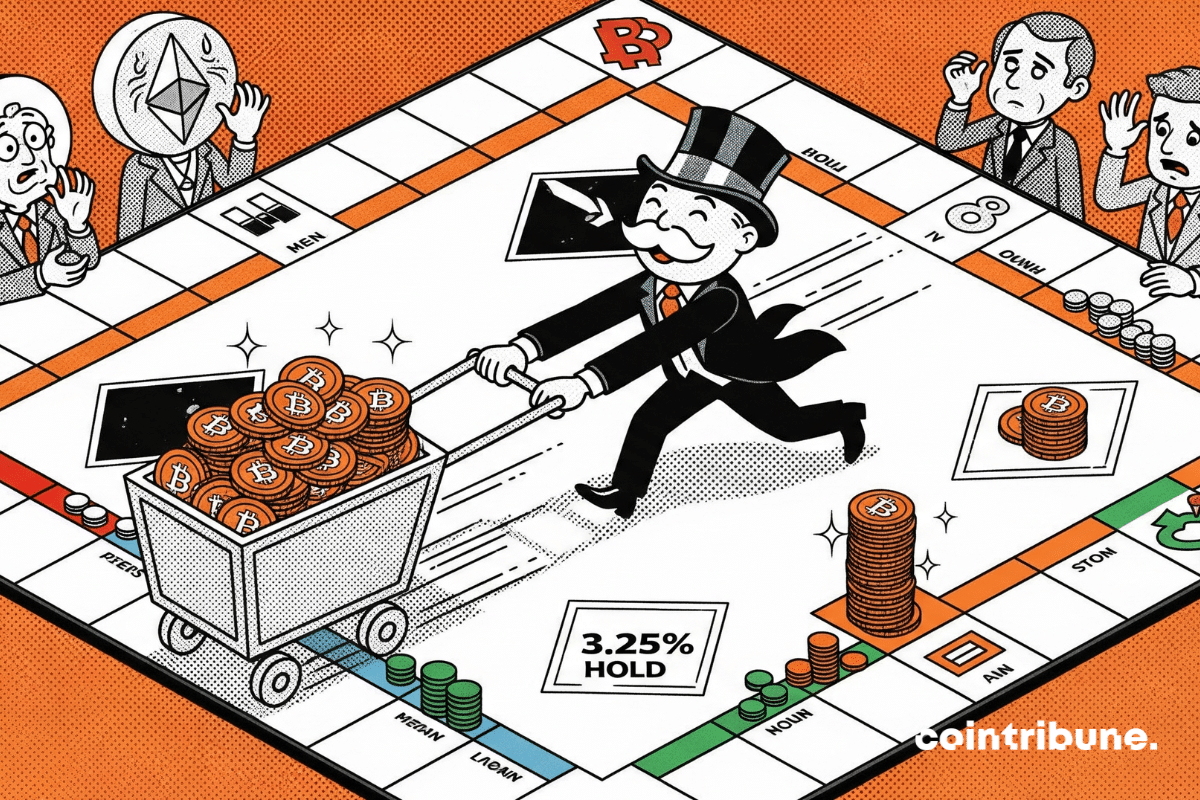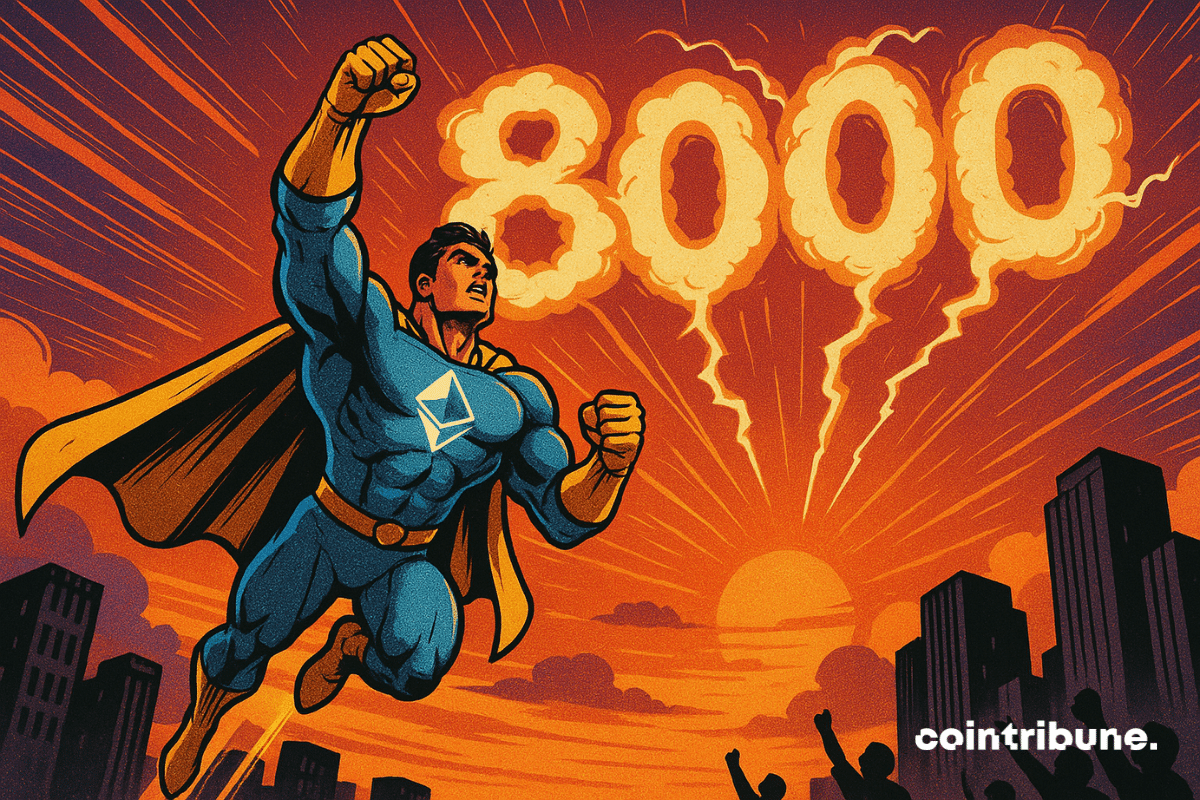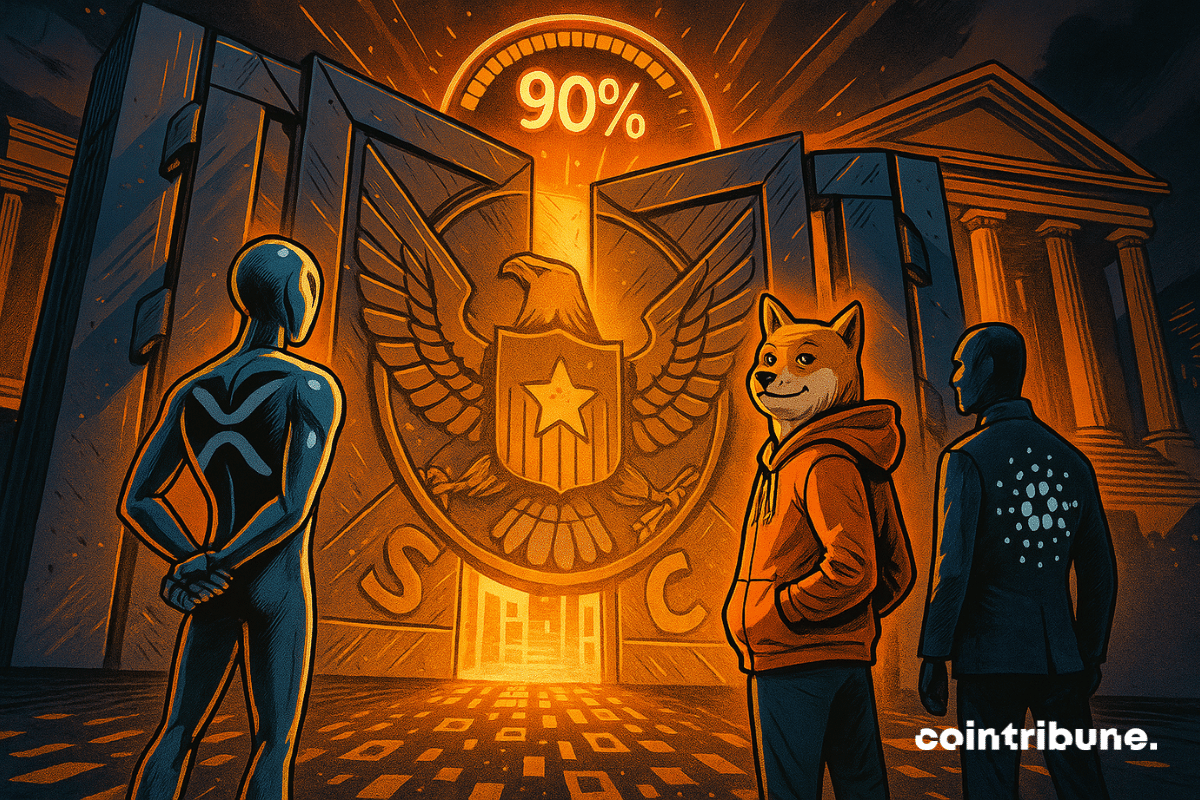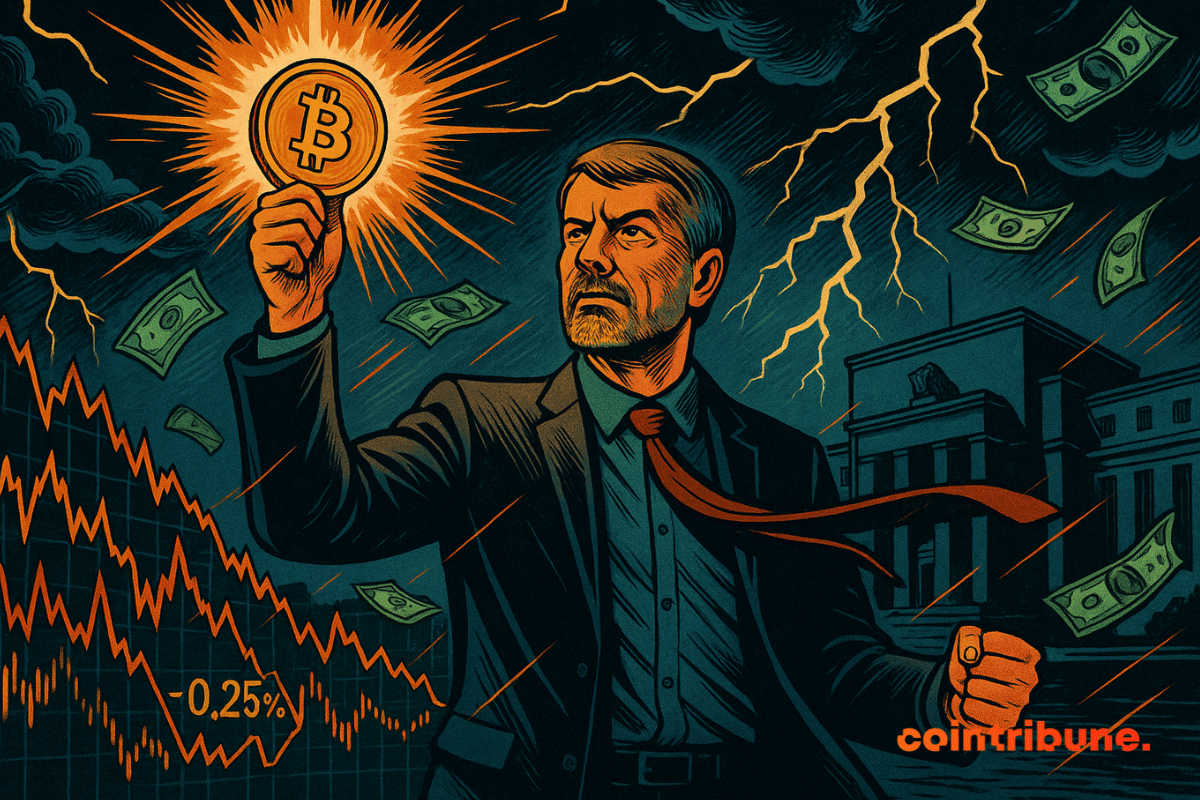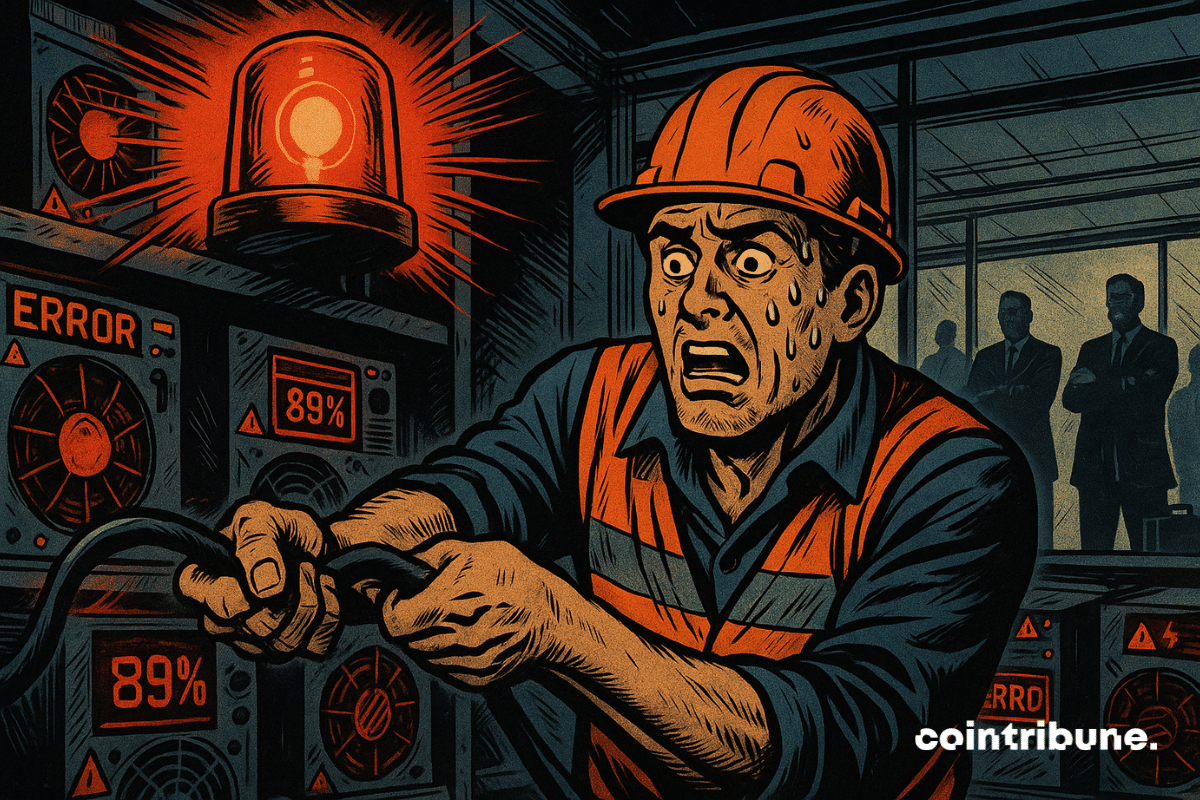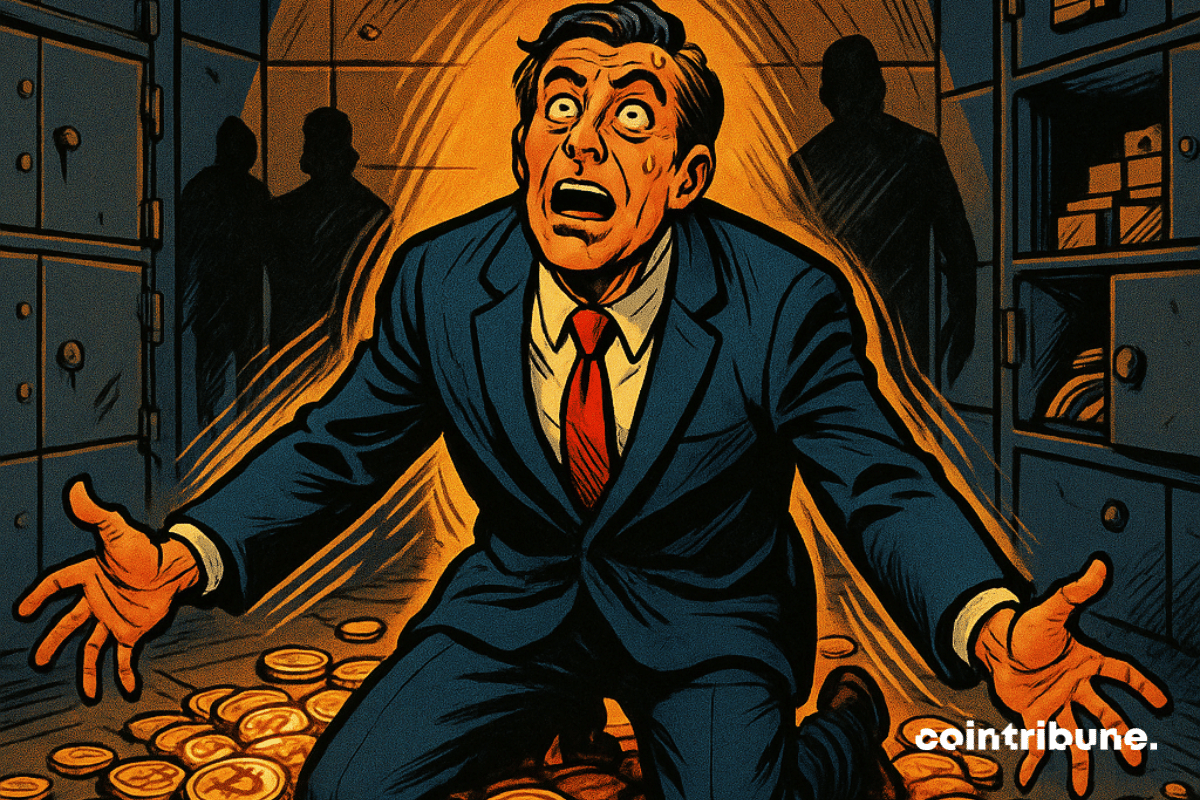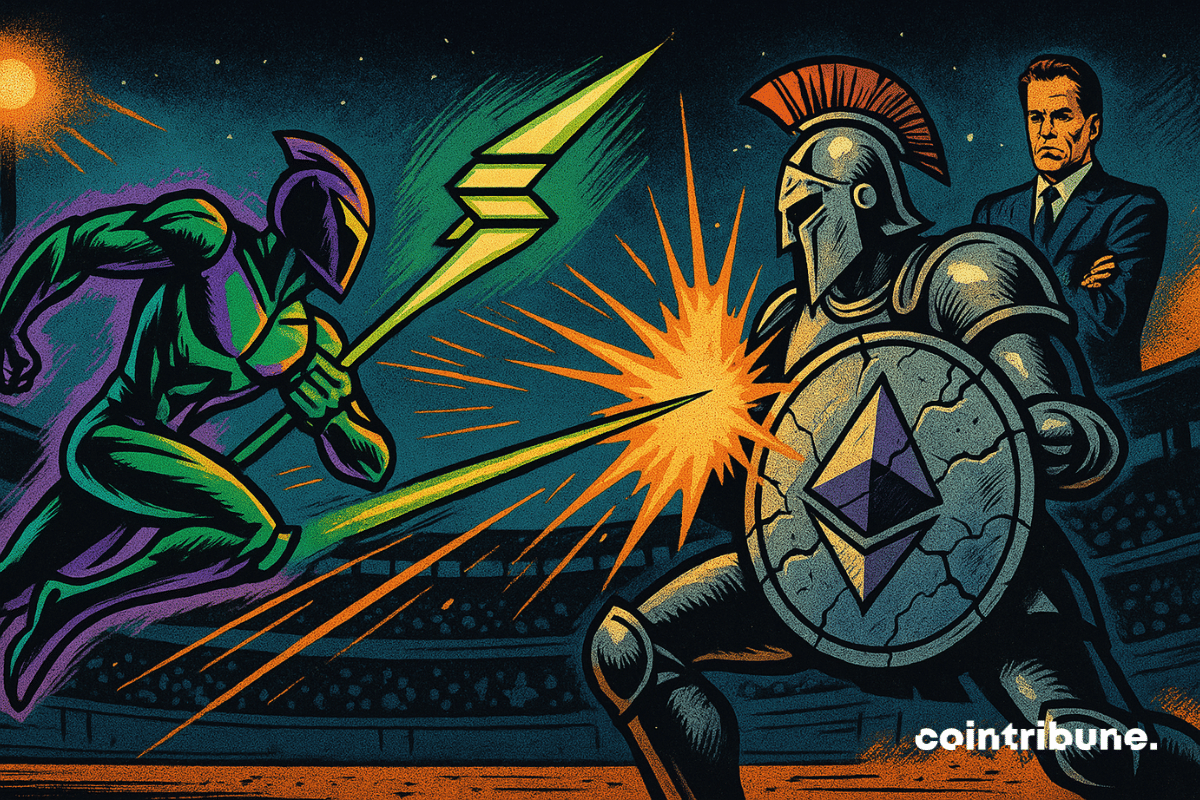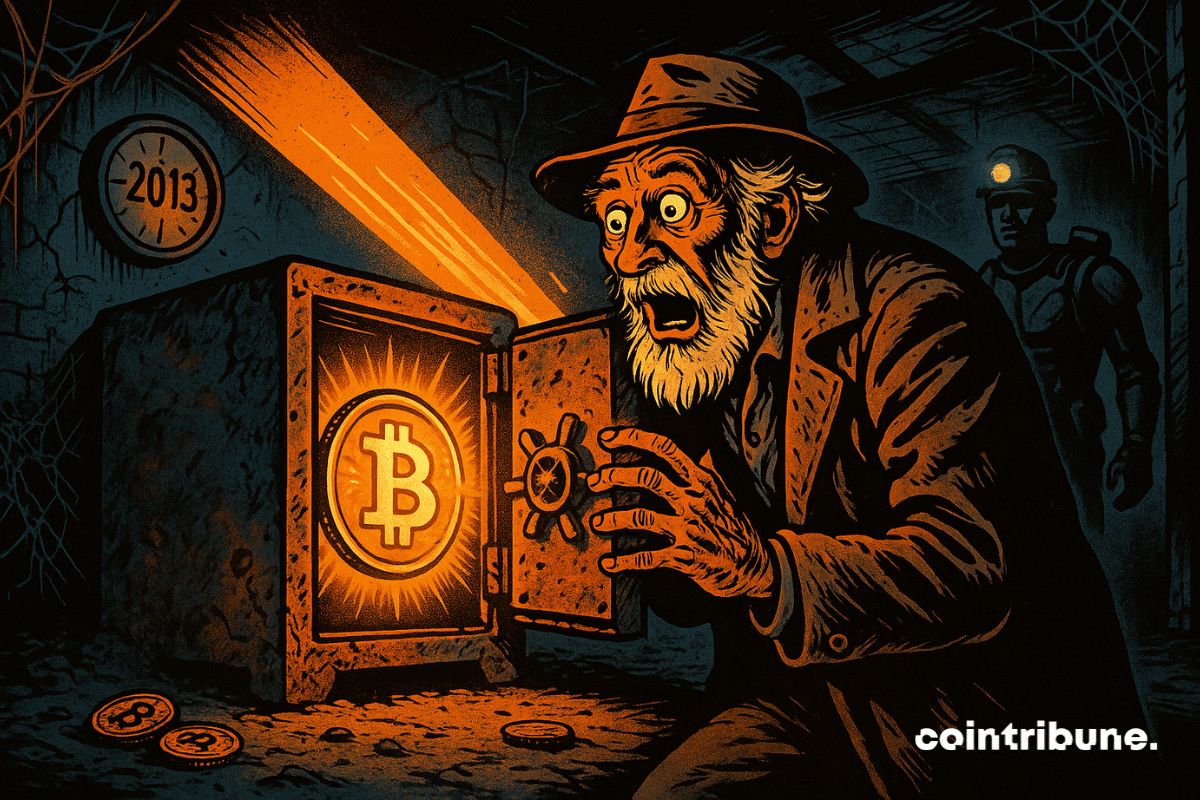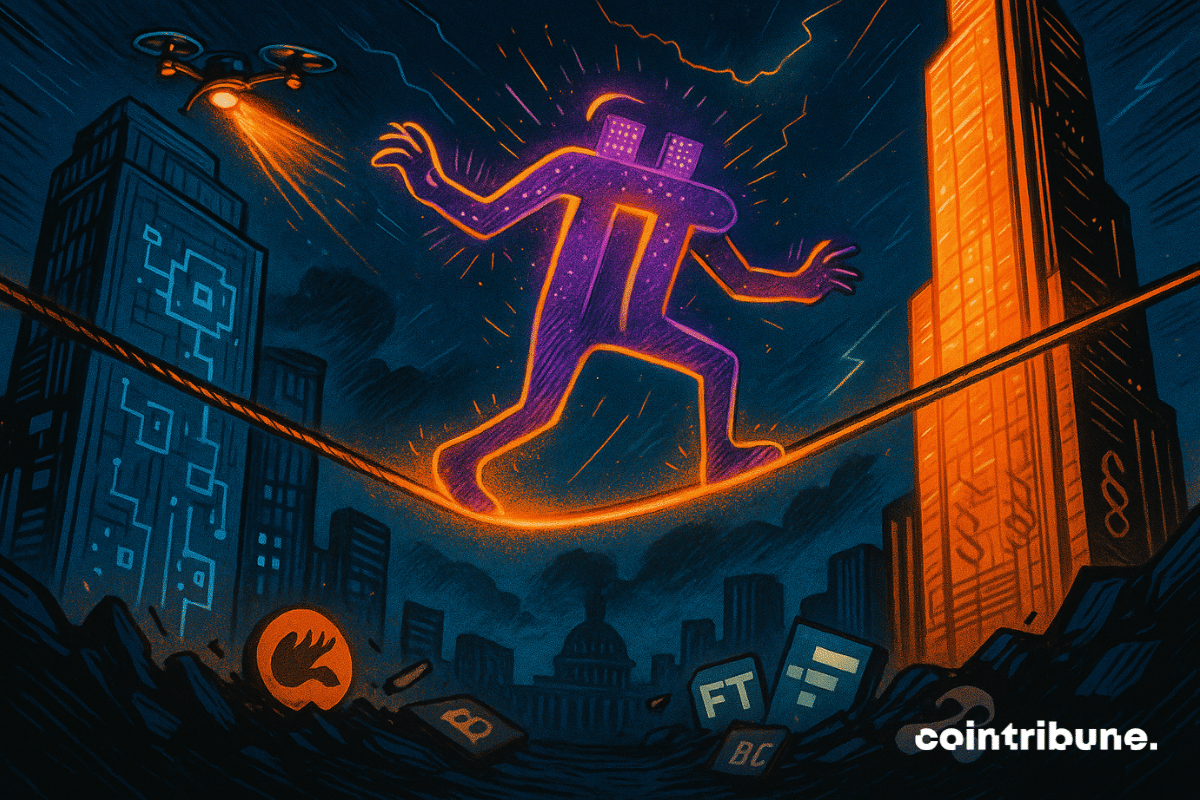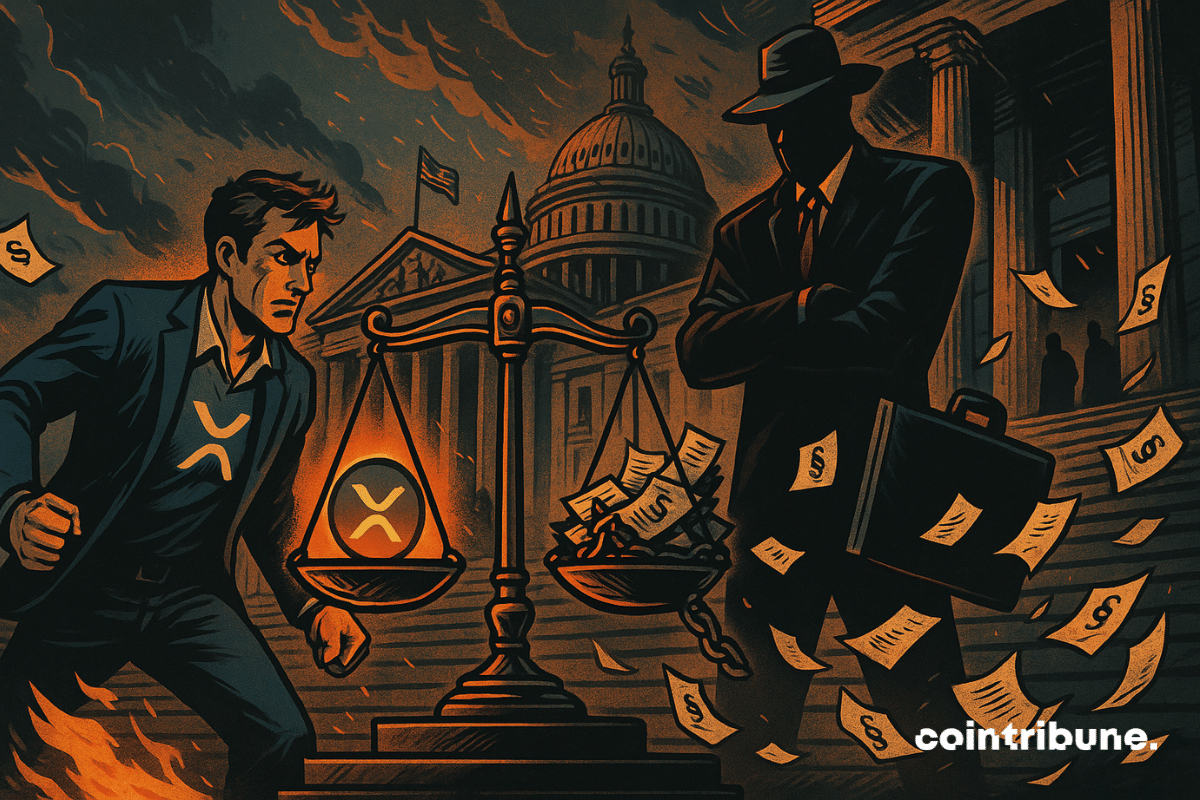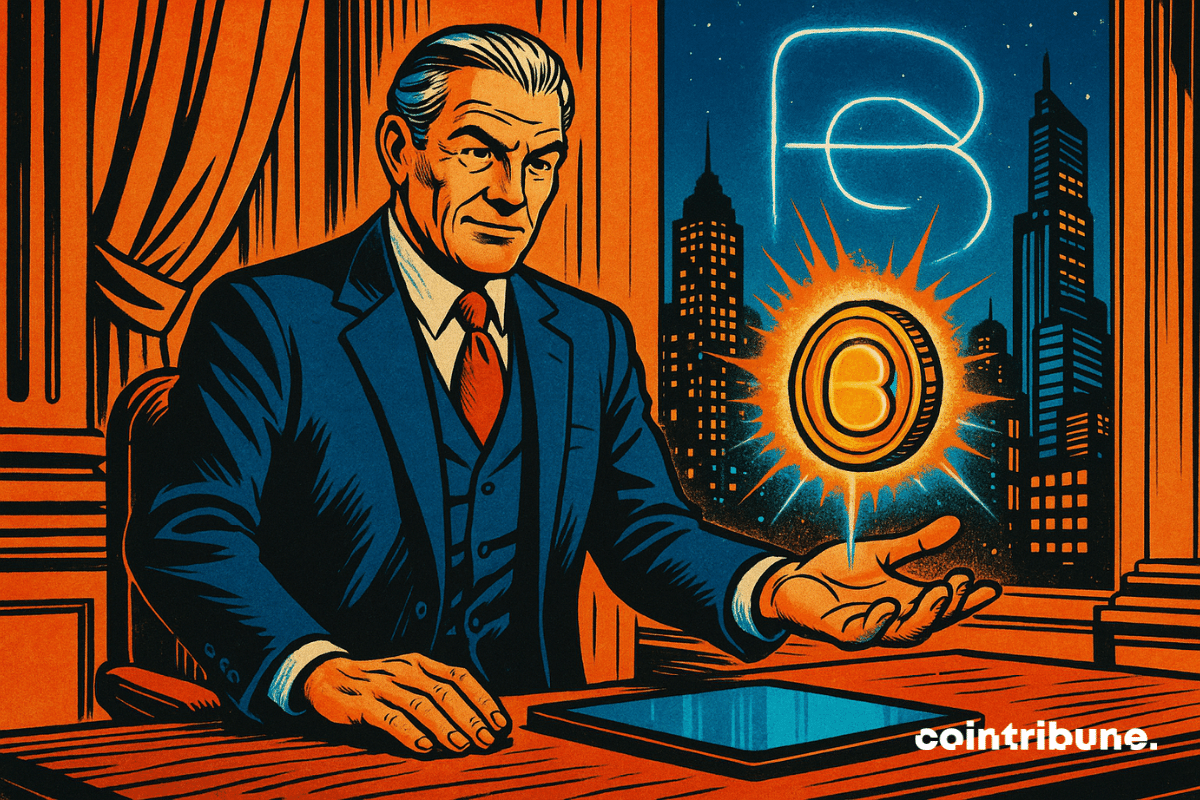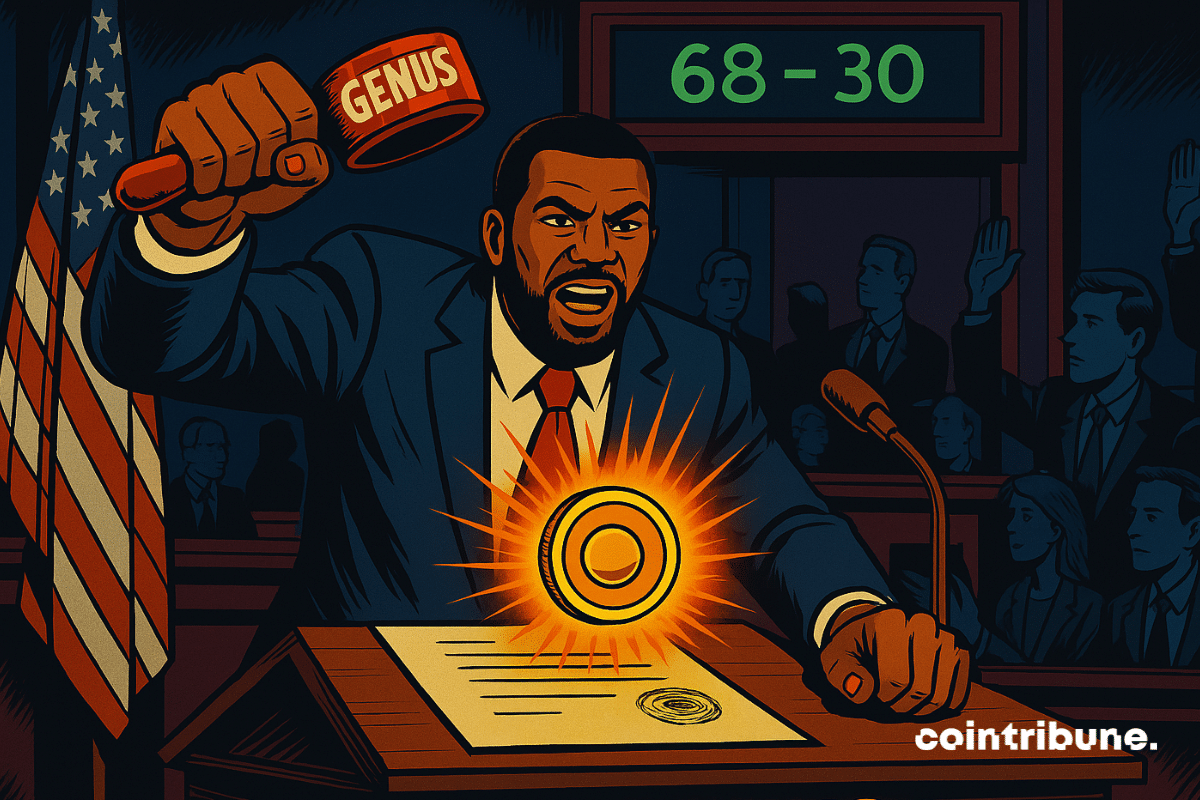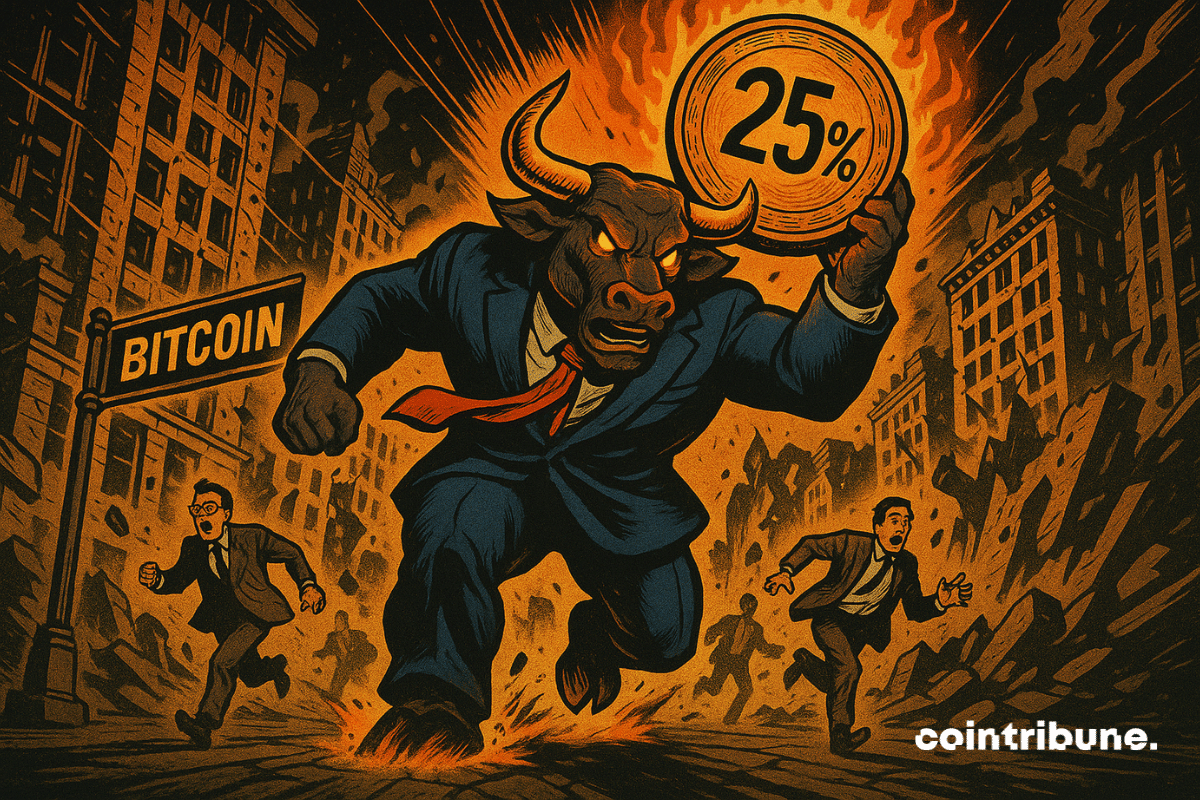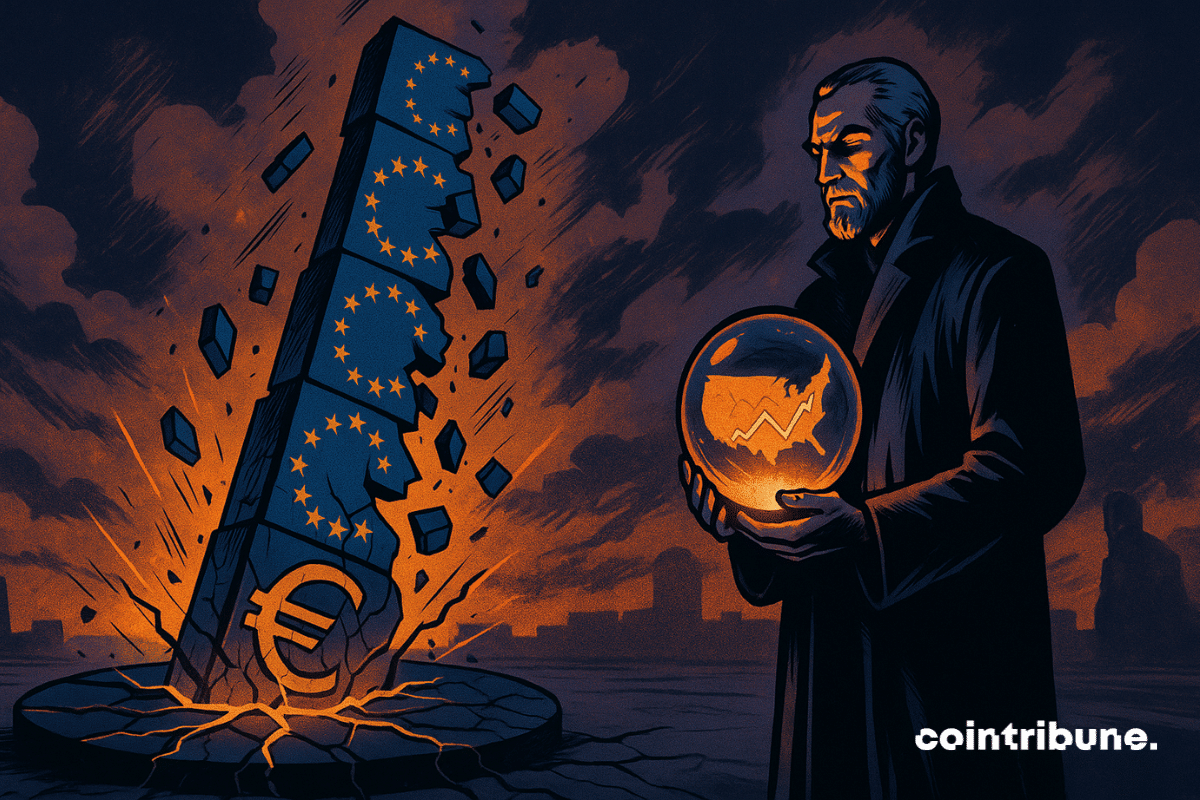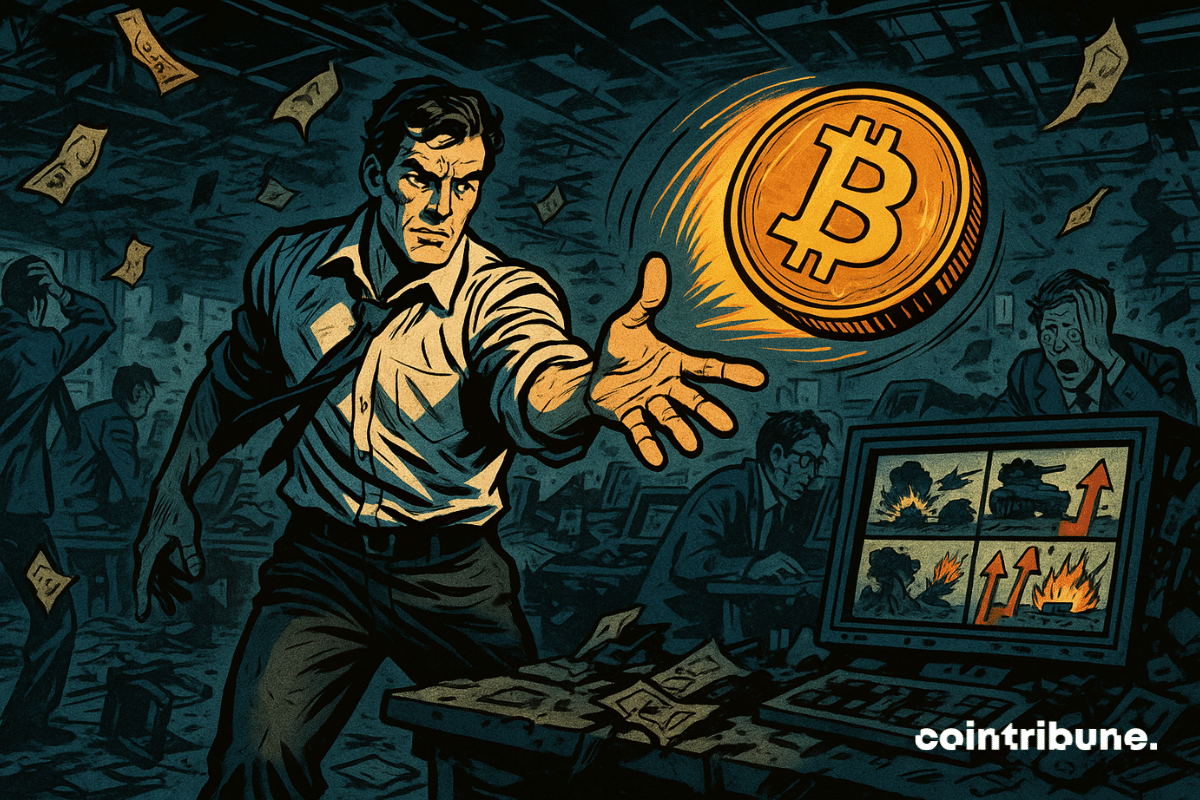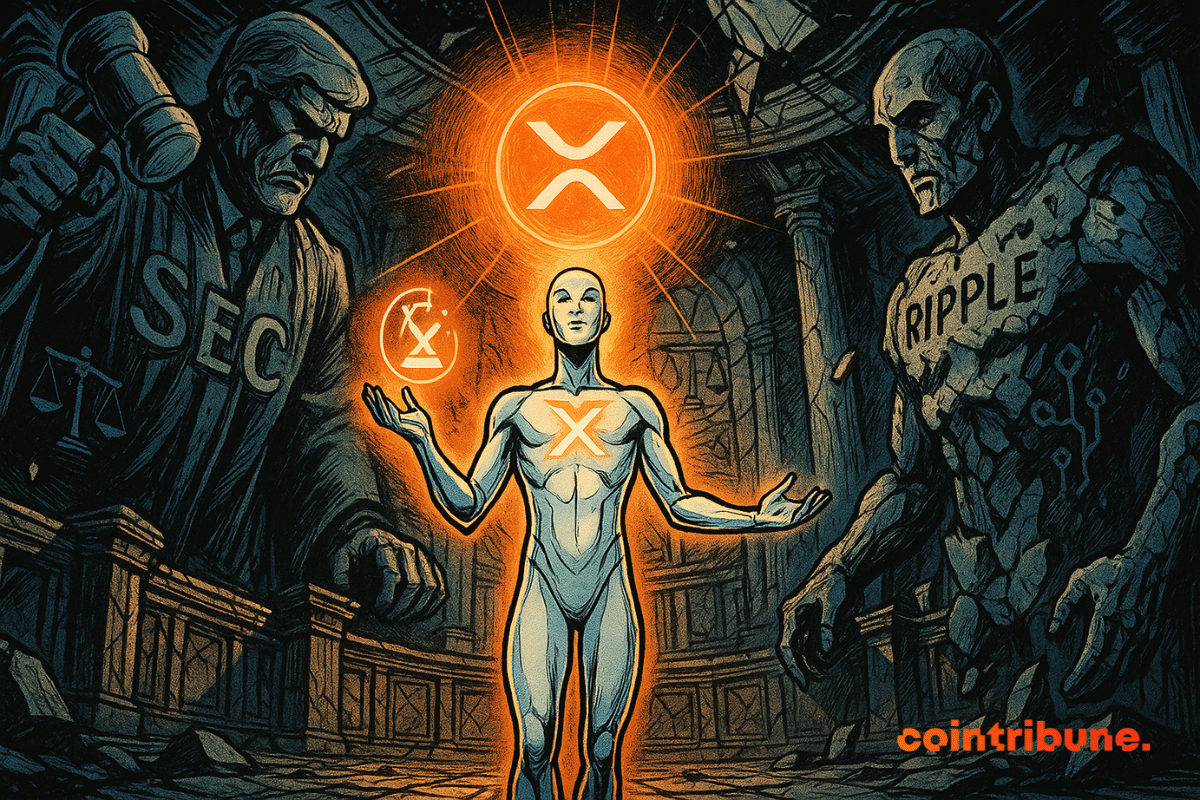While Bitcoin puffs its chest at 65%, altcoins are playing hide and seek with their fans. Altseason expected? Yes… but only in the wet dreams of sleepless traders.
Crypto News
Early XRP investors are sitting on gains of over 300%, but rising selling pressure is testing the token’s strength.
As Bitcoin stumbles under the blows of brutal volatility, an enigmatic tweet from Michael Saylor adds fuel to the fire. An AI-generated image, a nod to The Matrix, and this cryptic phrase: "Tickets to escape the Matrix are sold in Bitcoin." Is it just a jest? Or a coded message for those who still know how to read between the lines?
The Norwegian government is considering temporarily suspending new bitcoin mining operations. This drastic measure, motivated by energy concerns, could reshape the landscape of European mining.
As the Ethereum ecosystem continues its quest for performance, the Fusaka fork is set to mark a decisive milestone. Without fanfare or technological disruption, this update targets precise optimizations of the virtual machine and blob management. Far from any publicity stunts, it could nonetheless sustainably enhance the network's efficiency.
Bitcoin continues to break records, but it's the behind-the-scenes of the market that now captures attention. While its price touches new heights, another figure is alarming: 96 billion dollars in open interest on derivatives. This data, as fascinating as it is concerning, raises a simple yet crucial question: is leverage propelling Bitcoin… or preparing for its fall?
BlackRock dominates Bitcoin ETFs with $69.7 billion. We provide all the details in this article!
As Ethereum consolidates its position above $2,500, technical signals are accumulating and attracting analysts' attention. A configuration deemed particularly explosive appears to be taking shape, prompting several experts to anticipate a historic rally. Is the second cryptocurrency poised to break a new all-time high?
The regulatory lock on cryptocurrencies in the United States could soon be lifted. According to Bloomberg, the spot ETFs for XRP, Dogecoin, and Cardano now have a 90% chance of being approved by the end of this year. This is a first, as only Bitcoin and Ethereum had previously received the SEC's approval. Behind this shift is a clear signal: the American regulator is changing its tone. And altcoins, long kept at bay, are set to join the arena of traditional financial products.
Bitcoin’s recent consolidation has traders uneasy, with retail investors growing cautious. Yet, experts see this calm as a potential bullish sign.
Michael Saylor stays confident in Bitcoin despite the Federal Reserve’s decision to keep rates steady. His company recently added 10,100 BTC, boosting its total holdings to over 590,000 coins, signalling strong belief in Bitcoin’s long-term value amid mixed market reactions.
The American Bitcoin mining industry is going through a critical period. Between archaic tax regulations and growing economic pressure, miners are now demanding fair treatment compared to their counterparts in traditional commodities.
Semler Scientific has just thrown down its conservative mask to reveal a blazing ambition: to accumulate 105,000 bitcoins by the end of 2027. A strategic target that would place the company second among global institutional holders, just behind MicroStrategy, the empire of Michael Saylor.
As the crypto ecosystem remains dominated by heavyweights Bitcoin and Ethereum, a bold statement from Anthony Scaramucci, founder of SkyBridge Capital, shakes the hierarchy. At the DigiAssets 2025 conference, the investor claimed that Solana will overturn Ethereum, while acknowledging that he does not hold a strong opinion on the latter. A comment that reignites a burning debate: Can Solana really establish itself as the new benchmark for blockchains?
Away from the spotlight, a massive influx is reshaping the landscape of crypto investment in the United States. In just eight days, spot Bitcoin ETFs have attracted $2.4 billion, despite a lackluster market. This sustained flow contrasts with the prevailing caution and reveals the growing anchoring of Bitcoin in institutional portfolios. Meanwhile, Ethereum, which has long been in catch-up mode, is showing signs of fatigue. Such a divergence raises questions about market priorities and upcoming strategies in the realm of digital assets.
Ethereum stays strong above $2,500, outshining Bitcoin as whales accumulate and pressure builds for a breakout.
As Bitcoin enters a new phase of maturity, an unexpected phenomenon redefines its scarcity: every day, more BTC become inactive for ten years or more than new coins are mined. A silent but consequential reversal.
Economist Peter Schiff is openly opposing the U.S. government on the future of stablecoins. While Washington relies on these cryptocurrencies to strengthen the dollar, Schiff predicts the opposite. But is he right to be concerned?
While Bitcoin is stagnating, some altcoins are wavering. This is the case with Pi Network, whose token PI, still not officially listed, just brushed against a new low of $0.40. This sharp drop, followed by a slight rebound, fuels a renewed tension around a project that is as closely followed as it is questioned. Between intense speculation, conflicting technical indicators, and imminent deadlines, the cryptocurrency is now moving in a critical zone that could determine its short-term future.
Eyenovia has made a bold leap into crypto, raising $50 million to back the HYPE token and rebranding as Hyperion DeFi.
American President Donald Trump is urging Congress to promptly pass the GENIUS Act on stablecoins. A race against time is on to make the United States the global leader in digital assets. But does this rush conceal personal interests?
For five years, the Ripple vs SEC case has crystallized tensions between crypto innovation and American regulation. On June 17, Ripple filed a strategic motion with Judge Analisa Torres, aiming to close the case without further judicial confrontation. If accepted, this initiative could accelerate the resolution of the dispute, but also redefine the relationship between blockchain companies and financial authorities in the United States. A legal precedent may be on the verge of being established.
JPMorgan Chase is finally realizing its crypto ambitions with the launch of JPMD. After filing its trademark application earlier this week, the bank is launching its "deposit token" on Coinbase's Base. How does this token work, and what issues are at stake behind this strategic choice?
While Trump rakes in millions in home tokens, the Senate blesses stablecoins. New digital dollar or old electoral trick? A deep dive into the American crypto theater.
Bitcoin and crypto markets dip as rising concerns over Middle East tensions and Trump’s unexpected actions stir uncertainty.
Wall Street's offensive knows no bounds. In less than a year, spot Bitcoin ETFs have captured a quarter of the global trading volumes of the flagship cryptocurrency. This spectacular breakthrough is reshuffling the cards between traditional finance and native crypto platforms, revealing a profound transformation in the sector.
Europe, once a pioneer in the regulation of cryptocurrencies, might soon become just a simple corridor traversed by innovation without ever holding onto it. While the United States and Asia are making concrete advances, the Old Continent is bogged down in caution. Catriona Kellas, legal officer at Franklin Templeton, pulls no punches: the EU risks being relegated to the status of a spectator, unable to compete with the dynamics of major rival powers.
Military tensions in the Middle East are entering a critical phase. While Israel intensifies its strikes against Iran, prediction markets are going wild. The likelihood of a U.S. strike is reaching unprecedented levels. This increase in volatility fuels fears of a regional conflagration, closely monitored by investors, particularly in the crypto ecosystem.
As the world enters a new zone of turbulence, with war in the Middle East, soaring energy prices, and monetary uncertainty, one anomaly persists: Bitcoin is not falling. It is rising. This is a striking paradox in a climate where traditional assets are wavering. Should this be seen as further proof of its transformation into a safe-haven asset? Or merely an illusion of stability fueled by market euphoria?
As the legal tug-of-war between the SEC and Ripple drags on, XRP refuses to give in to pessimism. On the contrary, the asset displays an astonishing vitality in the derivatives markets. This unexpected resilience raises an essential question: Is XRP preparing for a strategic turnaround, counter to the current regulatory climate?
